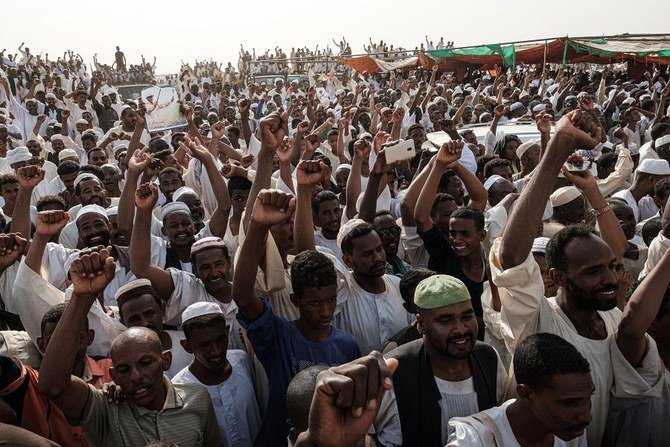Sudan braces for mass protest as demonstrators fear violence

Sudan braced Sunday for a mass protest in the capital against the country’s ruling generals, as calls mounted for restraint to prevent a new military crackdown on demonstrators.
The planned “million-man” march is seen as a test for protest organizers who have been hit by a June 3 raid on a Khartoum sit-in and a subsequent Internet blackout that has curbed their ability to mobilize support.
Dozens of demonstrators were killed and hundreds wounded when armed men in military fatigues stormed the sit-in outside army headquarters, shooting and beating protesters who had camped there since April 6.
The new protest comes at a time when Ethiopia and the African Union (AU) are jointly mediating between the protesters and generals.
A top general, Mohamed Hamdan Dagalo, warned Saturday that no vandalism would be tolerated.
“There are vandals, there are people who have an agenda, a hidden agenda, we don’t want problems,” said Dagalo, the ruling military council’s deputy head and chief of the feared paramilitary Rapid Support Forces (RSF).
Protesters have voiced fears of new violence.
“I expect large numbers... and it’s very possible that security forces will use force against protesters,” said Mustafa, 25, who gave only his first name for security reasons as he planned to participate.
Another protester, Talal, 29, was looking forward to Sunday’s rally, the first since the crackdown.
“Even if only a few rallies take place in Khartoum, they will break the barrier of fear and more people will take to the streets in following days,” he said.
The umbrella protest movement, the Alliance for Freedom and Change, said demonstrators will launch rallies from several areas in Khartoum and its twin city of Omdurman, and march to residences of some protesters killed in the June 3 raid.
About 130 people have been killed since the crackdown, the majority of them on that day, according to doctors close to the alliance.
The health ministry says 61 people died nationwide on that day.
The ruling military council insists it did not order the dispersal, but acknowledged “excesses” after orders were given to purge a nearby area notorious for drug peddling.
The council has warned it would hold the alliance responsible for any fresh violence.
“The country is going through a serious crisis, and we will hold the Alliance for Freedom and Change entirely responsible if any soul is lost in the march,” it said.
In a separate development, an RSF unit prevented protest leaders from holding a press conference to unveil plans for Sunday’s rally.
“Before we could start the press conference, three vehicles from the RSF, full of armed men, came to our building and told us not to hold the press conference,” a prominent protest leader, Ahmed Al-Rabie, told AFP.
Tension remains high between the two sides since the June 3 raid, which followed the collapse of talks over who should lead a new governing body — a civilian or soldier.
Ethiopia and the AU have now proposed a blueprint for a civilian-majority body, which the generals say could be a basis for resuming talks.
Protesters had initially gathered at the military headquarters to seek the army’s support in ousting longtime ruler Omar Al-Bashir.
They kept up their sit-in to demand civilian rule after the generals seized power.
The European Union, several Western nations and rights groups have called on the generals to avoid any violence on Sunday.
“Their right to peacefully protest and express their views on 30 June, or on any other date, remains key,” the European Union said.
The council “must not allow the country to slide back into yet more repression. The world is watching,” said Amnesty International’s Secretary General Kumi Naidoo.
However, mobilizing protesters has become a challenge since the raid, with military rulers imposing a widespread Internet blackout.
In the lead-up to Bashir’s fall, tens of thousands of protesters were mobilized through social media, but now protest leaders have to resort to neighborhood campaigns to keep the movement alive.
